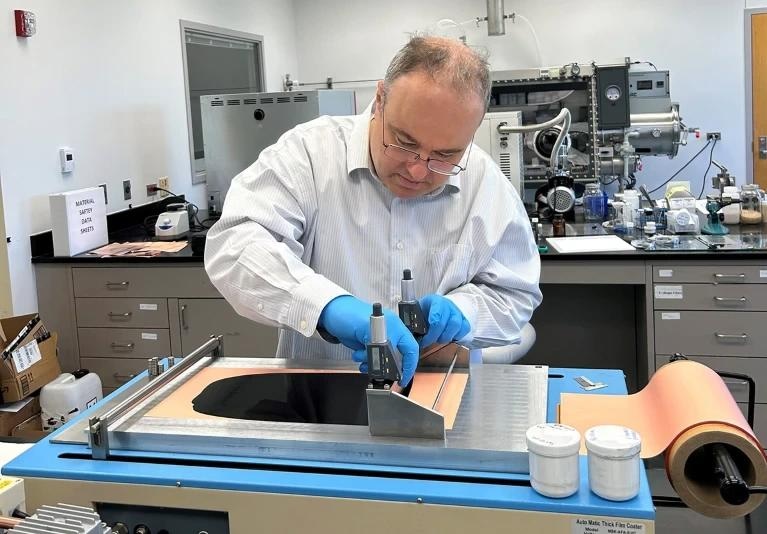At the University of Maryland’s College Park, start-up AquaLith Advanced Materials is working on developing new energy-dense rechargeable batteries that are cheaper and safer than existing battery technology using readily available resources.

Image Credit: Aqualith Advanced Materials
Having been longlisted for The 2023 Spinoff Prize, an award that highlights the achievements of university spinoff companies, AquaLith has exclusive access to a portfolio of lithium-ion battery patents licensed from the University of Maryland.
AquaLith was founded by Professor Chunsheng Wang, a distinguished chemist and biochemical engineer at the University of Maryland in College Park, and company CEO and serial tech entrepreneur Gregg Cooper, Ph.D.
The company has managed to harness the power of existing technologies and combine them with advances in material solutions in order to create an innovative solution that displace the dominance of traditional lithium-ion (Li-ion) batteries in the near future.
What sets AquaLith apart from others is its working approach. Instead of striving to make battery technology safer, cheaper, and more efficient by reinventing the wheel, they have used existing materials that are readily available.
Water-Based Solution
While Li-ion technology is the most popular choice in almost all rechargeable battery applications in today’s world, powering everything from the phone in our pockets to the cars we drive, it is not without its risks. Conventional Li-ion batteries contain a liquid electrolyte that is volatile and highly flammable, meaning they are at high risk of fire or explosion if compromised in any way.
Moreover, Li-ion batteries generate heat when in use, and if the battery fails by either forming dendrites in the battery or sustaining external damage, they can very quickly begin to heat up in an uncontrolled manner which could start fires that are difficult to contain.
Therefore the team at AquaLith Advanced Materials has been experimenting with ways to make the electrolyte safer without reducing the overall energy density of the battery. To do so, they added salt to a water-based electrolyte to create a less volatile solution than conventional electrolytes containing lithium salts.
Generally, while water-based electrolytes have always been safer and more economical than lithium-based electrolytes, their energy densities have not performed as well as their counterparts leading to performance inefficiencies.
Thus, simply adding salt to a water-based electrolyte could improve efficiencies. In fact, the results showed that the addition of salt to a water-based electrolyte formed a film around the electrodes, thereby increasing their voltage capacity by around 150%.1
Improved Anodes and Cathodes
The electrolyte is a key part of the battery, as it allows for the transfer of ions between the electrodes. Both electrodes also have a crucial role to play in battery chemistry. The anode in traditional Li-ion batteries found in electric vehicles (EVs) is usually made of graphite; however, Wang and Cooper believe this could still be improved upon.
Previous studies have shown how researchers have looked into using silicon as an alternative to graphite, as it is more cost-effective and lighter, and for EVs, weight is everything when it comes to efficiency.
Yet, silicon loses its ability to sustain its practical use of storing lithium atoms between cycles as the material degrades over time. One solution to this is to use nanoparticles, but this is extremely cost-prohibitive, and the material does not last very long.
AquaLith Advanced Materials have built an anode out of micro-sized silicon particles, which last longer than nanoparticles and demonstrate greater stability compared to traditional silicon anodes.
Micro-sized silicon particles reduce the weight of the battery by around 15-20% and could, in theory, see a 10% cost reduction on a 100-Kwh battery.1
The anode is where AquaLith has been able to make the most headway in terms of improving Li-ion battery technology, but they have also started to make a breakthrough with the cathode.
Traditional Li-ion cathodes are made up of lithium, nickel, manganese, and cobalt oxides (NMC) or from lithium iron phosphate (LFP).
NMC cathodes possess high energy densities but are expensive, whereas the benefit of the cheaper LFP is offset by the fact it holds less energy. Wang and Cooper were able to develop a hybrid material using existing resources – lithium bromide, lithium chloride and graphite.
The addition of graphite ensures the lithium bromide and lithium chloride are able to complete between 500-1000 charging cycles while maintaining high energy densities.
AquaLith will now focus on bringing these three innovations together and produce a working sample of the anode later this year, which will then be sent for testing. Aqualith’s aim is to begin production on its own batteries in the future.
With the increasing demand for better rechargeable batteries driven by the growth of electric vehicles and renewable energy, AquaLith’s innovative approach shows promise in revolutionizing energy storage.
References and Further Reading
- Savage, N. (2023) Better batteries built using existing technology, Nature News. Available at: https://www.nature.com/articles/d41586-023-01009-w
Disclaimer: The views expressed here are those of the author expressed in their private capacity and do not necessarily represent the views of AZoM.com Limited T/A AZoNetwork the owner and operator of this website. This disclaimer forms part of the Terms and conditions of use of this website.